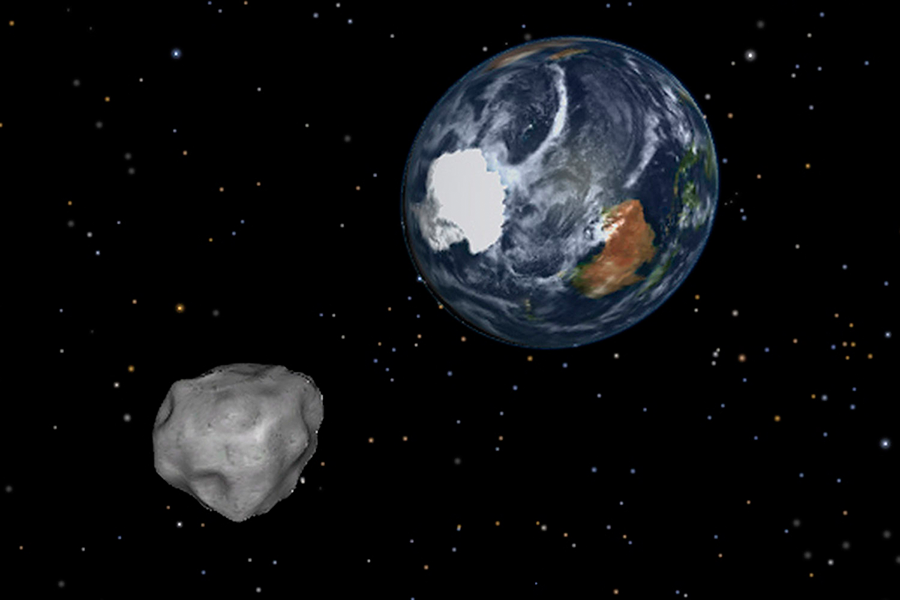'Spooky' asteroid to zoom past Earth at 78,000 m.p.h. on Halloween
Loading...
Back in August, in response to a viral conspiracy theory, NASA released a statement denying that Earth would be struck by a large asteroid a few weeks hence, causing widespread destruction.
It turns out that the space agency was right. But what about the one headed our way on Halloween?
An asteroid is anticipated to come within 310,000 miles of Earth – about a third longer than the average distance to the moon – its nearest approach is estimated at 11:14 a.m. Eastern on October 31, according to NASA.
Called 2015 TB145, the asteroid was spotted by astronomers on October 10 using the Panoramic Survey Telescope & Rapid Response System (Pan-STARRS) at the University of Hawaii's Institute for Astronomy. NASA estimates the space rock measures between 984 and 1,542 feet in diameter and is traveling "unusually fast," according to the space agency, at about 78,000 miles per hour.
"The flyby presents a truly outstanding scientific opportunity to study the physical properties of this object," NASA said in a statement.
NASA's Near-Earth Object Project has been detecting so-called Near-Earth objects since 1998, coordinating efforts worldwide with hundreds of other programs and astronomers to locate, track, and research potentially dangerous asteroids and comets that could come close to Earth.
According to NASA, no known object poses an imminent threat, but a more grassroots approach sprung up in 2013 to help catalogue those space rocks that have yet to be identified.
Called the Grand Challenge, the NASA program asks amateur astronomers around the world to help NASA "track all asteroid threats to human populations, and to know what to do about them," Jason Kessler, the director of the program said in an interview with CNN.
"We have discovered about 95% of the one kilometer or larger asteroids, that's roughly the size of the one that is thought to have wiped out the dinosaurs upon impact," Mr. Kessler said. "Unfortunately we only know about roughly 1% of those asteroids that get down to the 30 meter size, so there's a tremendous amount out there that we have yet to discover."
He added that, although the data sounds menacing, "Nothing we know of is threatening Earth right now."
As of October 16, 13,256 Near-Earth objects (NEOs) have been identified; of those, 1,635 have been classified as Potentially Hazardous Asteroids (PHAs) due to their size.








